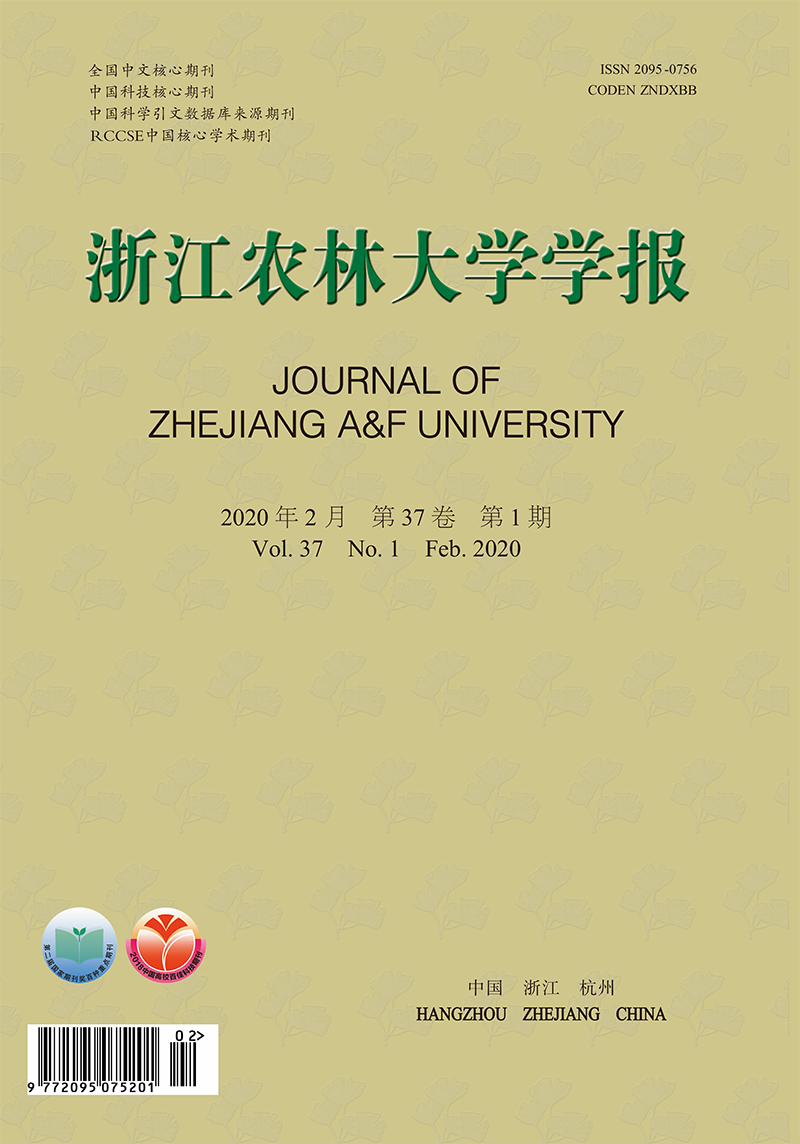-
因为城市地面覆盖物多,发热体多,加上密集城市人口生活和生产中产生大量的人为热,造成市中心的空气温度高于郊区空气温度,人们把这种气温分布现象称为“热岛效应”。由于城市的发展,下垫面原有的自然环境,如农田、牧场等发生了根本的变化,人工建筑物高度集中,以水泥、沥青、砖石、陶瓦和金属板等坚硬密实、干燥不透水的建筑材料替代了原来疏松和有植物覆盖的土壤[1]。城市热环境随着经济的发展日益恶化,已阻碍了人居环境品质的提升,是亟待解决的现实问题。绿色植被作为改善人居热环境的基础手段,不仅具有较好的节能效益,还具有明显的经济效益[2]。国内外学者分别从理论与实践研究等角度,在植被对城市热岛效应影响方面开展了大量研究。
HTML
-
1833年,HOWARD[3]首次描述了“热岛效应”的气候特征,指出伦敦市中心气温比周围乡村高。1958年,MANLEY[4]提出了“城市热岛”(urban heat island,UHI)概念。1982年,OKE[5]将城区气温最大值与郊区气温的差值定义为城市热岛强度。城市热岛效应的早期研究为后续研究提供了重要的概念基础,并为不同观测方式下的定量化研究指明了方向。
-
城市热岛的研究离不开数据获取,因此观测方式的选取是热岛效应研究的基础性问题。早期研究主要以地面气象站长期观测记录为基础,在统计与分析之后总结出热岛的时间变化规律。如MORRIS等[6]基于实测气象数据分别对澳大利亚的墨尔本、美国的费尔班克斯进行研究,得出城市热岛强度与云量、风速密切相关,晴朗无风的夜间热岛强度最高。但气象数据是由固定的气象站测取,具有一定的空间局限性,因此,一些学者开始采用流动观测法。OKE等[7]于1975年在加拿大的渥太华市做了全面的系统流动观测,公布了较为完整的原始资料,成为流动观测典范案例。除气象观测法与流动观测法以外,国内外学者还采用卫星遥感技术开展研究。由于地表温度是影响近地气温的关键影响因素,一些学者开始采用遥感卫星信息技术获取地表温度,从地表温度的演化视角开展热岛效应研究。RAO[8]在1972年第1次提出应用TIROS-1卫星遥感影像的热波段反演地表温度,从而辨别城市地域,并用这种方法观测了太平洋中部海岸城市的地表温度类型。周淑贞等[9]使用气象卫星对热场和下垫面结构的关系进行研究,在此基础上建立了相应的回归方程。覃志豪等[10]使用Landsat TM6波段研究地面温度反演,提出了能够反演真实温度的单窗算法。
-
不同观测方式下的热岛效应研究均发现:下垫面组成是影响热岛强度的重要因素,而植被是起着关键作用的一种下垫面类型。早期的研究方法主要以实测为主。CA等[11]通过研究日本东京城区某公园草地中午的降温效应发现:绿地的降温效果和绿地面积有一定关系,公园内气温比周边外围气温低约2.0 ℃。随着高分辨率遥感影像技术的发展以及反演方法的不断成熟,基于遥感影像技术的研究越来越多,如CHEN等[12]应用Landsat TM和ETM+影像反演地表温度发现,归一化植被指数(NDVI)与地表温度(LST)在一定范围内呈负相关关系。除了现场实测及遥感探测等研究方法外,数值模拟法逐渐成为重要的研究手段之一。ENVI-met模拟法是数值模拟法的典型代表,它被广泛应用于绿地降温效应研究,如ZHANG等[13]通过ENVI-met模拟研究武汉市植被对住宅热环境的影响发现,植被对热环境影响与树的排列、叶面积指数、冠宽和树高有关。
1.1. 城市热岛效应的早期研究
1.2. 不同观测方式下的城市热岛研究
1.3. 植被对城市热岛效应影响的研究方法
-
陆地生态系统是一个植被—土壤—气候相互作用的复杂大系统,内部各子系统之间及与大气和土壤之间存在复杂的相互作用和反馈机制。SCHULZE等[14]提出了植被生态系统能量交换关系:植被生态系统的冠层入射通过冠层反射、土壤热通量、冠层和土壤蒸散、显热交换等方式实现与外界能量交换,并以光合作用方式固化大气二氧化碳来储存部分能量。
植被冠层与外界的能量交换是以叶片的光学作用为基础的,叶片光学作用包括吸收和透过率光谱。SMITH[15]在1986年提出了叶片光学特性与能量平衡示意图,并指出在光合有效辐射波段植物吸收了90%以上的入射能量,以获得更高的光合速率和生产力。叶片吸收的光能一部分以长波辐射的方式释放[16-17],一部分以热传导的显热方式释放[18],大部分能量以蒸腾作用的方式释放并降低叶片温度[19],只有少部分能量以有机物方式固定下来[20]。植被通过光合作用及蒸腾作用实现了与空气的热能量交换。除此以外,在夏季,叶片温度普遍低于周围地物表面温度,乔木树冠对周围地物发射长波冷辐射,这将进一步降低植被邻近墙面、地面温度,并在一定程度上降低植被附近的气温[21];在冬季,乔木可以通过树冠和树干产生阻力来减少空气对流[22-23],起到保温的作用。通过植被的“冷岛”作用来影响建筑的“热岛”效应,从而营造舒适的人居热环境。
-
相对稳定的生物群落的重要特征之一是具有一定的空间结构,群落中各种生物在空间上的配置状况称为植被空间结构。植被空间结构包括垂直结构和水平结构。
-
植被垂直结构指植物群落在垂直方向的配置状态,其最显著的特征是成层现象。一般按生长型把植被结构从顶部到底部划分为乔木层、灌木层、草本层和地被层4个基本层次。目前的研究主要集中在2个方面:一是单一层次植被对降温效应影响的研究,二是复合层次植被对降温效应影响的研究。对于前者,单一层次主要指乔木层。目前,国内外学者均采用实测法[24-25]。HSIEH等[26]通过实测建筑周边不同树木温度后发现,降温能力上从大到小依次为樟树Cinnamomum camphora、梧桐Firmiana platanifolia、水杉Metasequoia glyptostroboides。于雅鑫等[27]通过实测12种木兰科Magnoliaceae乔木的蒸腾速率并量化其降温能力指出,由于落叶树种比常绿树种的蒸腾速率高,所以落叶乔木的降温能力比常绿乔木好。植被复合层次是指以乔、灌、草作为常见的3种基本单元对其中的2种及以上的单元组合情况下的植被降温效应进行比较分析,国内以实地测量为主要研究方法,国外则多采用实测与模型相结合的手段进行研究。由于乔木在叶面积指数等方面明显高于灌木、草本,其蒸腾作用与遮光作用的影响最大,因此理论上乔木类对热环境调节能力应最强,不同学者的研究结果也证明了这一点。何介南等[28]、吴志能等[29]在定量研究植被垂直结构对热环境等效影响时,通过实测绿地温度并进行比较分析后发现,在降温效应上从大到小依次为乔木、灌木、草地。SODOUDI等[30]通过实测结合ENVI-met模型模拟以及DUNCAN等[31]通过遥感影像研究不同植被类型的降温程度结果均证实了这一结论。而对于乔-草、乔-灌与乔-灌-草之间的降温效应比较,结论却有差异。雷江丽等[32]认为:乔-草的降温能力大于乔-灌-草,刘娇妹等[33]则认为乔-灌-草优于乔-草,而吴志能等[29]认为乔-灌优于乔-草。
植被的降温效应研究目前主要集中在白天时段,但植被对周围空气温度的影响是全天的,因此有学者对植被夜间降温能力进行了实测研究。聂危萧等[34]对居住区组团中心绿地植被温度实测分析发现,日间乔-灌的降温效率相对更高,而夜间则是灌草的降温效果更强。造成这种降温效应昼夜差异的原因是植被在白天与夜晚的降温机理不同所致。在晴热的白天,植被一方面通过光合与蒸腾作用实现与周围空气的热量互换,同时通过长短波辐射遮蔽降低了周围地物的表面温度,并进一步降低邻近空气温度;而在没有太阳的夜晚,城市下垫面地物的表面热量通过长波辐射的方式转移至天空,这种热量传输的快慢受天空角系数的影响[35],对于具有乔木或灌木的环境,地面及墙面将先与植被发生长波辐射换热,阻挡了下垫面与天空的长波辐射,这种“被子”效应使树冠下的热量发生滞留。因此,对3种基本植被垂直结构单元而言,夜间的降温会产生乔木<灌木<草本的结果。目前,植被的降温效应研究主要集中在夏季典型日,而缺少全年时段的评价与分析,尤其是冬季等极端不利天气条件下的研究。因此,研究不同季节气候条件下植被对城市热岛效应调节作用机制亟待开展。
-
在研究植被水平结构的城市热岛效应时,首先需解决的问题是如何快速而准确地获取某地的植被水平结构信息。目前,大多数学者采用遥感影像提取技术解决这一问题[36],也有学者采用实测与ENVI-met相结合的手段来进行研究[37]。雷江丽等[32]、贾刘强等[38]分别以Landsat ETM+遥感影像为数据源,提取了绿地斑块的面积、周长、形状指数等信息,房力川等[39]则通过Landsat OLI/TIRS单期遥感影像反演了地表温度。上述遥感信息的获取为进一步分析植被水平结构的降温调节能力提供了数据支撑。除了水平结构信息获取问题外,植被水平结构定量描述参数的选取与定义是另一个关键问题。目前,采用的参数主要有斑块形状指数、斑块面积与斑块周长等。但对斑块形状指数的定义目前仍存有分歧,如雷江丽等[32]与袁振等[40]认为:形状指数是斑块的周长面积比,而贾刘强等[38]则将形状指数定义为斑块周长除以同面积圆的周长。在水平结构信息参数定义的基础上,学者们大多利用统计回归分析法,进一步探讨植被水平结构对城市热岛效应的影响规律。在斑块面积与周长等对城市局地气温的调节方面,学者们所得结论较为一致,即绿地斑块面积、周长越大,其降温效应越好,但形状指数的降温效应研究却存在较大分歧。贾刘强等[38]、JAGANMOHAN等[41]认为:形状指数越大,绿地斑块降温效应越好,即呈正相关关系,李海峰等[42]则指出:形状指数与其降温效果间并无显著的相关性,而FEYISA等[43]却发现:绿地斑块的降温效应与形状指数呈负相关关系。
除上述定量研究外,有学者也关注到了绿地斑块面积与降温关系的阈值效应问题。袁振等[40]认为:绿地斑块面积为0.055 km2时,对周边的降温效果较好;贾刘强等[38]指出:绿地斑块面积超过1.5 hm2时,对周边气温的影响范围和降温程度随着面积增大的速度而迅速减小。由此可见,绿地斑块面积对降温效应的影响存在阈值效应,即绿地面积过小,植被覆盖度就小,绿地斑块不能很好的发挥降温作用;面积过大,绿地斑块的降温效应在达到某一临界值后便会趋于平缓。另外,绿地斑块对与周边环境的降温影响也有一定范围。晏海[44]通过实测总面积680 hm2的北京奥林匹克森林公园及公园周边环境气温发现,随着距公园边界距离的增加,气温呈逐渐升高趋势,公园对其两侧的城市环境都有一定的降温效应,这种降温效应可延伸到距公园边界1 km以外的区域。另外,不同绿地类型的热岛缓解效应的比较研究也是热点之一。绿地斑块根据不同作用分为不同类型,有公园绿地、居住区绿地、街旁绿地、其他绿地等。在降温效应方面,房力川等[39]指出:降温效应从大到小依次为其他绿地、公园绿地、居住区绿地、街旁绿地。目前,对于绿地斑块与降温效应的研究很多,但研究的结果却各有不同。这些差异表明,对于绿地斑块降温效应的理论研究还有欠缺,需进一步挖掘探讨。
-
植被垂直结构与水平结构着眼于植被群体效应,这一群体效应是多个个体效应的叠加。植物个体主要通过冠层叶片吸收和反射太阳辐射及叶片本身的蒸腾作用来降低周围气温。因此,植被冠层结构对缓解城市热岛效应有着重要作用。植被冠层结构参数对城市热岛效应的影响规律是近年来的研究热点,冠层参数主要包括叶面积指数、冠幅、郁闭度及绿量等。
-
叶面积指数(LAI)指单位土地面积上的植物叶片总面积占土地面积的倍数。叶面积指数的测量方法通常分为直接法和间接法。直接法包括破坏性取样法、异速生长方程法、斜点样方法和凋落物法;间接法包括顶视法和底视法[45]。大部分相关研究都采用底视法,即借助光学仪器自下而上测量,目前最常用的仪器为植物冠层分析仪[45]。在上述测量方法的基础上,大部分学者认为:植物群落的降温效果与叶面积指数呈正相关关系,即有随叶面积指数的减小而降低的趋势[46-47]。秦仲等[48]对北京市14个植物群落进行了降温效果测定发现,植被降温效应与叶面积指数虽呈正相关关系,但并不显著,并指出产生这一结果的原因是植物蒸腾耗热、降低辐射平衡和削减乱流热交换量等方面的综合影响。唐泽等[49]通过对长春市18个公园样地进行实测分析后进一步指出,叶面积指数与降温强度呈非线性正相关关系。除分析叶面积指数与降温效应的相关关系外,很多学者也对其降温效应最佳阈值区间进行探讨。唐泽等[49]通过样方调查测定长春市植物群落对周围气温的影响发现,森林样地的植被叶面积指数最佳降温阈值区间为0.23~2.30;张波等[50]通过对太原市城市绿地斑块的降温效应研究发现:叶面积指数发挥降温效应的阈值为2.1~4.5。两者的阈值区间存在差异是因为他们研究对象不同。唐泽等的研究对象是森林,植被类别为单一的乔木。而张波等研究的则是面积不小于1 hm2的绿地,包括了乔、灌、草等多种植被,这种复合型的植被结构对叶面积指数最佳降温阈值区间也产生了较大影响。
-
冠幅指树木的南北和东西方向宽度的平均值。树冠可以有效遮挡太阳辐射,冠幅越大,林隙、裸露地面就越少,因此,大部分太阳辐射被上层的叶片遮挡、吸收和反射,只有少部分能到达地面,而且冠幅盖度越大,蒸腾作用的量也就越大,能更有效地降低周围气温。不少学者的实测结果也证明了这一点。秦仲等[48]、黄良美等[51]、王纪来[52]、赵晓龙等[53]分别对北京市植物群落、南宁市植物群落、重庆市植物群落、哈尔滨市行道树的冠幅及周围气温进行实测。虽然研究的城市、对象并不相同,但他们都发现树木冠幅与植物降温效应呈显著正相关关系,因此,植物冠幅对降温效应的正影响并无地域差别。另外,王纪来[52]还认为:植物冠层的形状和厚度是影响植物群落降温效应的重要因素。相较于交错叠加的植物群落冠层,独立的植物冠幅对植物群落降温效应的影响是有限的。当植物冠层交错叠加时,林隙减少,透过林隙落到地面上的太阳辐射就会减少,空间冠层结构内水分和热量乱流交换强,土壤及植被蒸散出的水汽不易扩散,使得植物群落发挥降温效应的能力更强。
-
郁闭度指森林中乔木树冠在阳光直射下,在地面的总投影面积与此林地总面积的比值,它反映了林地的密度。郁闭度的测量方法主要有目测法与实测法。实测法又分样线法、样点法、树冠投影法、遥感图像判读法等[54]。植物通过叶片蒸腾作用来增加空气中的水分含量,并进行热量交换,从而降低空气温度。郁闭度值较大的绿地,植物蒸腾作用较强,对绿地周围的干热情况具有较好的缓解作用,QIN等[55]和XIAO等[56]通过实测植物群落郁闭度与降温效应的关系证明了这一结论。另外,有学者对北京市的植被群落结构的降温效应实测分析发现,郁闭度对降温效应的影响存在最佳阈值区间,如朱春阳等[57]认为:植物群落郁闭度在44%~67%时降温效应显著,大于67%时降温效应显著且趋于稳定;高吉喜等[58]认为:郁闭度的最佳阈值为50%~85%,高于85%则降温效应不再显著提高。两者均采用实测法,但两位学者最终得出的阈值区间有差异可能是因为朱春阳等研究的道路绿地是在城区内,其一侧是道路,一侧是硬质铺装,因此植被的降温效应更为明显,郁闭度的最优阈值区间也会相对较低。
-
绿量(LVV)指所有生长中的植物茎叶所占据的空间体积,即绿化三维量。目前,对绿量的研究主要有2个方面。一是对绿量获取方法的探讨,二是对绿量与植被降温效应之间关系的研究。对于前者,主要有2种测量方法,一种是通过遥感技术获取。随着遥感技术的发展,可以利用其对林相相对一致的林地绿量进行估计[59]。这种方法存在一定的弊端,因为遥感技术对于冠层结构和植物种类辨析上存在一定困难,而且由于绿量是三维空间参数,单纯依靠遥感技术无法满足三维绿量的准确测定要求,因此这种方法一般用在较大尺度的绿量研究上。另一种方法是实测法。实地测量植物种类的叶面积、胸径、冠下高等样本数据,通过模拟方程计算主要树种绿量,然后根据计算结果估算群落总体绿量[60]。这种方法相对更精确,但工作量较大,比较适合小尺度的绿量研究。对于后者,目前的研究结论较为一致,如吴志能等[29]、高吉喜等[58]、李英汉等[59]、吴菲等[61]分别对重庆的公园,北京的公园、典型绿地,深圳的居住小区等进行了实测分析,发现绿化三维量与植物的降温效应之间有显著的正相关关系。由此可见,绿量对降温效应的正相关影响并不因地域、绿地类型的差异而有区别。在以后的研究中可以加强对绿量获取方法的探讨,寻找既能方便测量、结果又精确的方法。
-
地面与空气的热量交换是近地气温升降的直接原因,也是影响热岛效应的重要原因。以地温为桥梁,借助植被遥感指数,可分析植被对城市热岛效应的影响。目前,常用植被遥感指数包含归一化植被指数(NDVI)、修正土壤植被指数(MSAVI)及减化比值植被指数(RSR)等。
-
在遥感影像中,常用近红外波段的反射值与红光波段的反射值之差来表示归一化植被指数(NDVI)。目前,卫星热红外遥感信息源主要有NOAA气象卫星的第4波段(10.5~11.3 μm)和第5波段(11.5~12.5 μm)、Landsat TM或ETM+的第6波段(10.4~12.5 μm)、FY系列气象卫星数据、中巴资源卫星IRMSS数据及MODIS数据等[62]。研究中最常用的是Landsat TM或ETM+影像数据。使用Landsat TM/ETM +反演地表温度的常用方法有4种:分别为单窗算法、单通道算法、分裂窗算法及辐射方程传导法[63],其中单窗算法最为常用。冯晓刚等[64]以Landsat TM和ETM+热红外数据为基础,采用单窗算法反演地表温度发现,归一化植被指数(NDVI)与地温(LST)呈显著负相关关系。NDVI与LST呈负相关关系已被多数学者认同[65-66],但两者之间存在何种函数关系还有争议。潘竟虎等[67]和王伟等[68]认为:两者之间呈显著线性负相关,而张波等[50]认为两者之间呈反“S”形曲线关系。
另外,有学者对NDVI作为定量描述城市热岛效应的指标提出质疑,因为植被受季节影响,NDVI只适用于研究春、夏季城市地表热岛效应[69],于是有学者开始寻找其他指标来研究城市热岛效应。例如,归一化建筑指数(NDBI)与归一化水汽指数(NDMI)与地温的相关性优于NDVI[69-70]。NDBI与4个季节的地表温度都存在显著线性正相关关系,而且LST与NDBI线性关系的斜率和截距都能很好指示不同季节城市热岛的强度[71]。NDMI与地表温度呈显著负相关关系,而且NDMI与地表温度的相关性也比NDVI强[72]。NDBI与NDMI可以更好地反映不同季节城市热岛效应的强度、空间格局及其随时间的变化,可在地表温度随季节变化的研究中作为一个附加指标对NDVI进行补充,是定量研究城市热岛效应的有效指标。
-
与归一化植被指数相比,植被覆盖度(FV)、修正土壤植被指数(MSAVI)、比值植被指数(RVI)、绿度植被指数(GVI)及减化比值植被指数(RSR)的研究相对较少。在这5种植被指数中,植被覆盖度受关注的程度最高。许民等[73]对武威地区的地表温度反演研究中得出,FV每上升0.1,LST下降约3.5 ℃;张晓莉等[74]利用西宁市Landsat遥感影像反演地表温度分析发现,FV每增加0.1,LST下降约1.2 ℃。另外,有学者对减化比值植被指数进行了定量研究。王伟等[68]发现:RSR的有效阈值为0~3.2,当RSR小于3.2时,地表温度随植被覆盖度增加而锐减,当RSR大于3.2时,植被覆盖度继续增加,地表温度却趋于恒定,呈现植被降温效应“饱和”现象。虽然,目前对归一化植被指数的研究最为广泛,但研究发现,它与地表温度的相关性却并不是最理想的。马伟等[75]通过对北京市植被指数对地表温度定量关系研究中发现:NDVI、FV、MSAVI、GVI及RVI均与LST呈负相关关系,其中,FV的相关系数最大,RVI最小;而魏宝成等[63]在研究呼和浩特市不同植被指数与地表温度的定量遥感关系时发现,RVI最高,NDVI次之,FV最小。这些研究表明:地表温度与植被遥感指数之间的关系还需进一步探讨,关于其他植被指数与地表温度之间关系的定量研究亟待开展。
2.1. 植被对城市气温的调节机理
2.2. 植被空间结构对城市热岛效应的影响
2.2.1. 植被垂直结构
2.2.2. 植被水平结构
2.3. 植被冠层结构对城市热岛效应的影响
2.3.1. 叶面积指数
2.3.2. 冠幅
2.3.3. 郁闭度
2.3.4. 绿量
2.4. 植被遥感指数与城市地表地温间关系的研究
2.4.1. 归一化植被指数(NDVI)
2.4.2. 其他植被指数
-
由于计算机与遥感技术的不断发展,在植被对城市热岛效应的影响方面,研究方法与手段都在不断更新与完善,研究的视角与区域尺度也在不断拓展。但综合目前的研究仍存在以下问题:①在大尺度视角下应用遥感技术对植被的热岛效应缓解机理研究集中于降温幅度与植被群落结构、叶面积指数和三维绿量间的相关性方面,此类定性结论虽能在宏观上引导城市规划设计师对热环境营造的关注,但距离指导实际工作尚有很大提升空间。②中小尺度研究基本以城区夏季乔木为主,鲜有考虑常绿乔灌木夏、冬两季的总影响,以及落叶乔灌木季相变化的影响,且描述植被冠体特征的参数偏少,在全面揭示不同种类乔灌木冠体的热辐射影响方面尚有欠缺,需进一步考虑乔灌木的季相变化,以及不同季节日照条件的变化,并补充常用的乔灌木的冠体特征参数,以全面分析植被对建筑热辐射的影响规律。
考虑目前存在的问题,结合相关技术的发展趋势,未来的研究可在以下几个方面展开:①在时间尺度上,进一步考虑乔灌木的季相变化,如常绿与落叶植被等冠体特征参数在不同季节日照变化条件下对建筑群组热环境的影响研究。②在空间尺度上,进一步加强基于传热学原理,研究全季典型日气候条件、不同乔灌木种类、不同种植方式下、墙植距离、墙植方位、建筑方位等参数变化对建筑群组热环境的影响。






 DownLoad:
DownLoad: